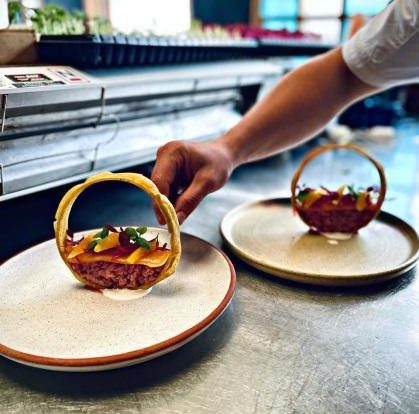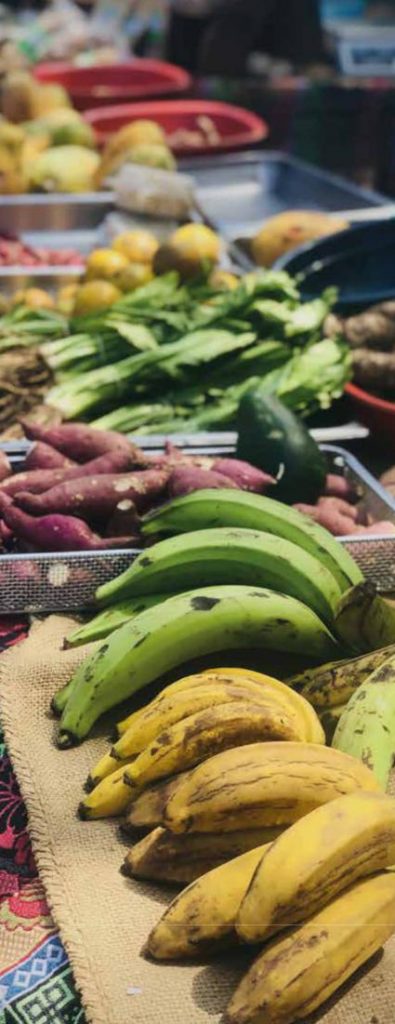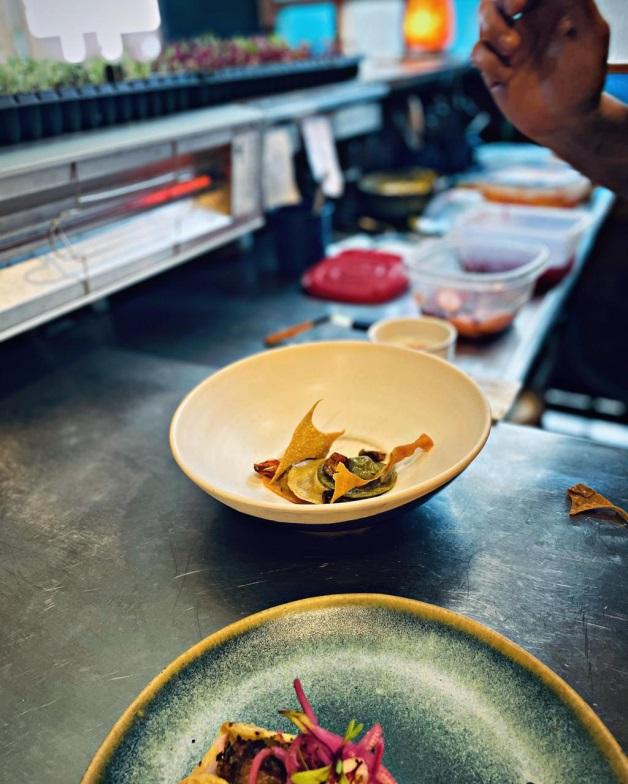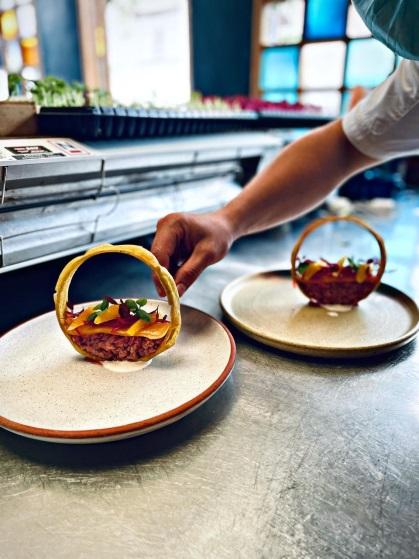Costa Rica, a Gastronomic Bridge

A privileged position. With a privileged geographical location, Costa Rica is a biological and cultural bridge that has allowed, for thousands of years, the passage and encounter of forest and animal species, as well as cultures from the north and south of the continent, in addition, of course, the clash of cultures that occurred in 1492.
“Although the country is small and covers only 0.03% of the planet’s surface, it has the privilege of being the habitat of 5% of the world’s existing biodiversity. 25.58% of its territory is protected under various forms of conservation” describes the Food and Agriculture Organization of the United Nations.
This is synonymous with a wide variety of foods. From fruits and vegetables, to meats and seafood. This results in the presence of four culinary regions well defined by their geography and cultural development: 1- the Central Western and Eastern Valleys, 2- Guanacaste and the Northern Zone, 3- Puntarenas and 4- Limón.

Cultural mosaic. Costa Rica’s history is marked by the influence of different cultural groups: from the indigenous people belonging to the Mesoamerican Area and the Intermediate Area, with strong Caribbean influences, to the arrival of the Spaniards, who in turn brought Sephardic and African influences.
This cultural crossbreeding was reflected in the food: both in the variety of products and in their preparation. The indigenous people mainly used corn, beans, tubers (potato, yucca, ñampí…) and pumpkins; while the Spaniards brought milk, cream, butter, cheese, rice, wheat, sugar cane and new animals.
| “Although the country is small and covers only 0.03% of the planet’s surface, it has the privilege of being the habitat of 5% of the world’s existing biodiversity. 25.58% of its territory is protected under various forms of conservation” describes the Food and Agriculture Organization of the United Nations. |
Later, thanks to the coffee bonanza in the mid-19th century, many immigrants arrived in the country over the next 100 years (Spaniards, Italians, Syrians, Greeks, Lebanese, Turks, Southern French, Americans, Jamaicans, Arubans and Bahamians, Germans, British, Swiss and Poles, Asians and, to a lesser extent, Mexicans, Nicaraguans, Panamanians, Cubans, Colombians, Peruvians and Argentinians) forging the multiculturalism of Costa Rican gastronomy, which had been diversifying since pre-colonization.

Autochthonous gastronomy.
All this fusion has created a common base throughout the country, composed primarily of preparations such as gallo pinto, casado, picadillos, olla de carne, gallos, empanadas, tamales, fresh fruit and coffee.
Of course, each zone has its own characteristics, mainly guided by the presence of specific products and cultural influences. The Caribbean, for example, is characterized by strong flavors, with spicy and sweet notes, guided by coconut, ginger, Panamanian chili, banana, etc., forming rice & beans, plantain tart, rondón, patí, among others.
In Guanacaste, rice, corn, meat, ferments and the clay oven lead the way, with preparations such as tanelas, chichas and pozol.
Puntarenas, on the other hand, is distinguished by its freshness and acidity: with ceviches, vigorón, churchill…
In the center, finally, we find seasonal products such as pejibaye, itabo flower and chiverre , which are intertwined with corn, rice, beans, eggs, meats, potatoes, etc., used to prepare the casados, empanadas, gallos, soups, among others.
All this versatility brings us to the present.

Contemporary cuisine.
In spite of having a great culinary heritage, as we have already seen, there aren’t many Costa Rican food restaurants. But let’s not confuse the typical food we talked about in the previous section (honored by the thousands of sodas and typical restaurants throughout the country) with restaurants that seek to reinterpret the traditions, hand in hand with local products, focusing on creativity and experience.
In recent years, however, interesting proposals have emerged throughout the country. Joan Roca, one of the best chefs in the world, said in July 2020 that “we must start thinking with a more sustainable conscience. Recycling, reusing, not wasting so much food. That will make people make authentic proposals, from their culture, their land, valuing what they have. And if all chefs start to be clear about that, it will be a trend: to be authentic and cook what is close to you. Differentiate yourself from another place by doing your own thing, not only from your area, but from your own way of understanding your cuisine”.
In Costa Rica, little by little this trend has been growing exponentially. It has been developed by restaurants, suppliers and producers themselves, who seek to generate benefits at a general level, with a holistic vision, beyond the commercial one. They want their product to stand out for what it represents, for the connections it generated and for the creative process that was carried out to come up with the final product.
This results in better products with healthier processes, forming a synergy between the cook and the producer, allowing for greater creativity and integration.
“But let’s not confuse typical food (…) with restaurants that seek to reinterpret, hand in hand with local produce, traditions, focusing on creativity and experience.” |
Understanding the product is key to know how to use it in the kitchen. For example, the cas, a very emblematic fruit of our country, characteristic for being refreshing, acid and sweet at the same time, we can compare it to a lemon and introduce it in ceviches, mixed it with seafood or even with fatty proteins such as pork, make a cas barbecue, for instance.
This trend is just emerging in our country and we are all responsible for it to gain more strength. We can do this by supporting small producers, visiting local enterprises and encouraging those who seek, in this case through gastronomy, to do something different, highlighting national products.
FACTS TO REMEMBER
- With more than 5% of the world’s biodiversity, Costa Rica has a great variety of foods.
- In Costa Rica, the trend to explore new recipes based on traditional ingredients is increasing.
- Let’s not confuse “typical food” with restaurants that seek to reinterpret Costa Rican cuisine.
Fabián Romero Jara
Entrepreneur, Administrator and Chef of the Restaurant 11.47
IG: 11.47Aranjuez
Navigate articles





